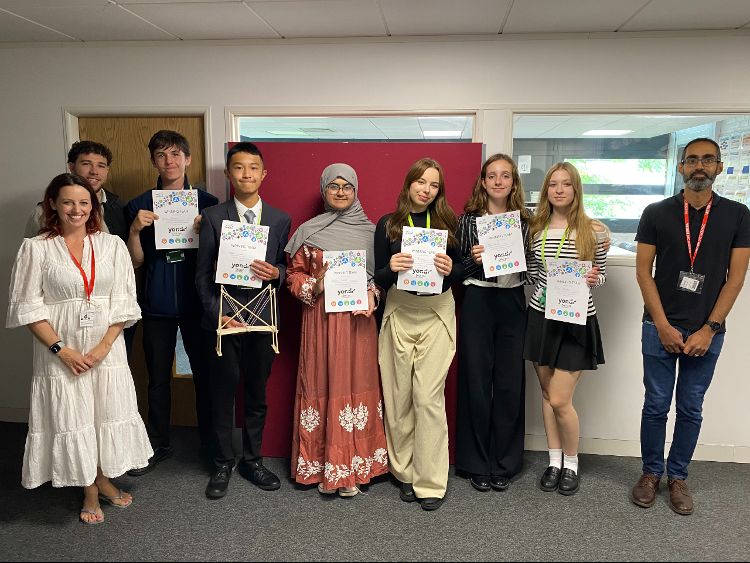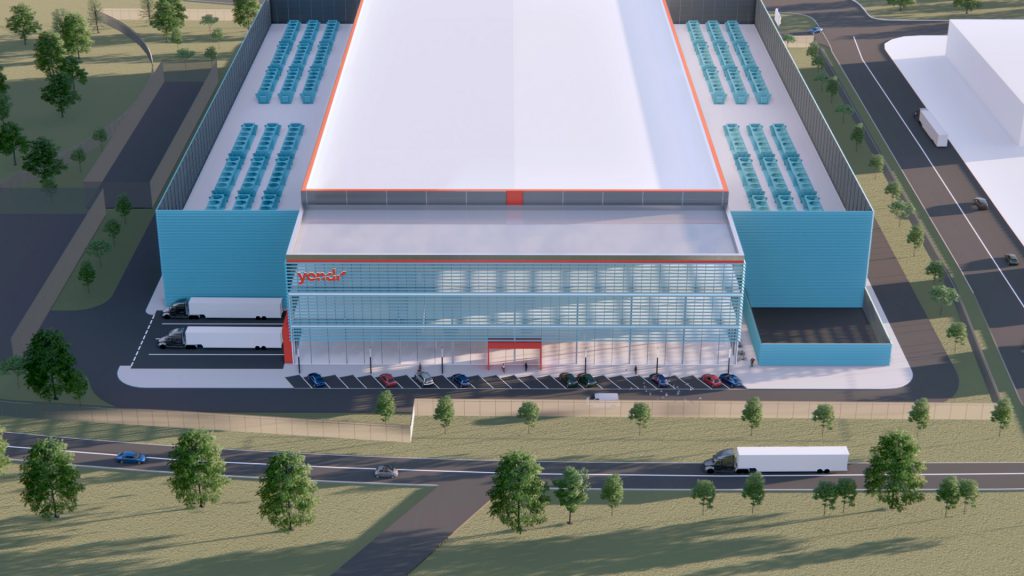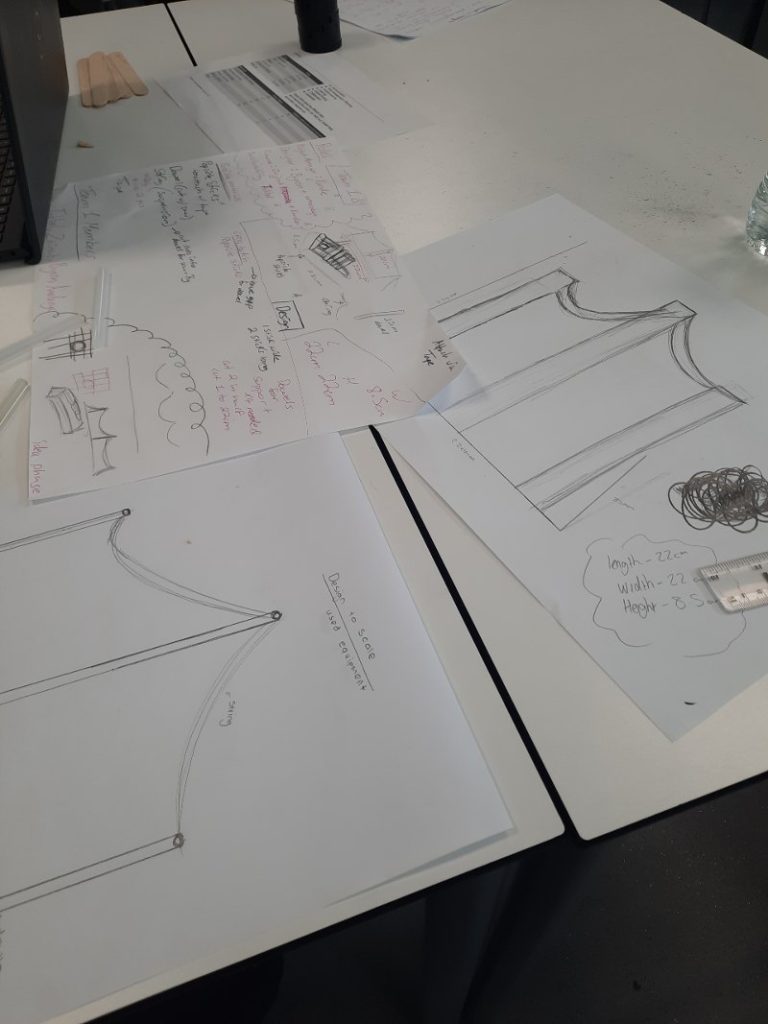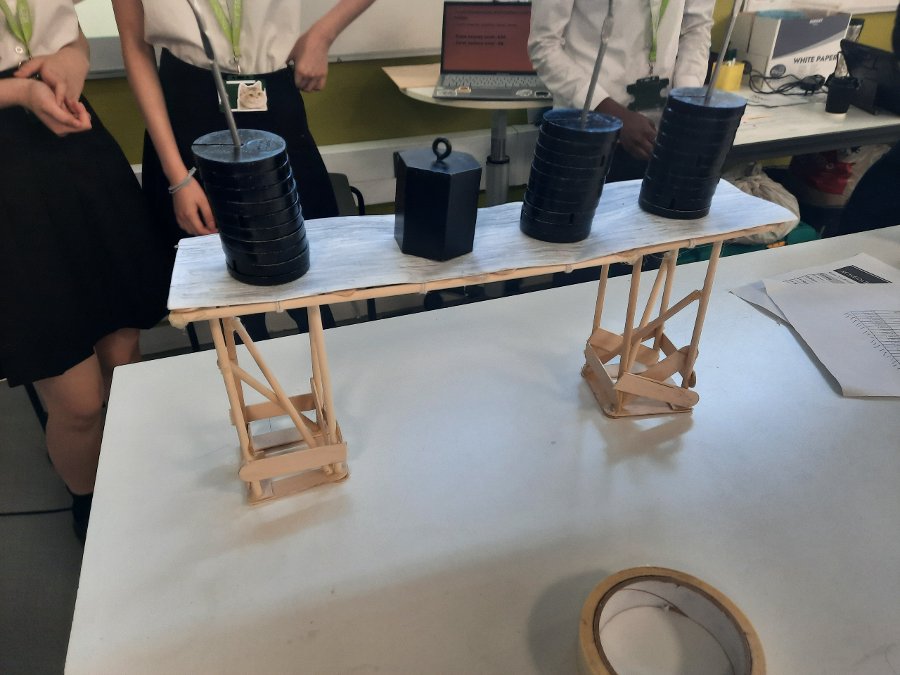Bridge-Building with Yondr: UTC Data Centres Workshop July 2024
On Monday 22nd July, we had the pleasure of attending a workshop at UTC Reading hosted by Yondr Group. The workshop was the fourth run by the hyperscale data centre developer and was a fantastic opportunity for us to watch the Digital Futures Programme in action.
We had the chance to speak to Yondr volunteers about why they got involved in the programme, and to teachers and students about the impact that the programme is having on their education and career plans. One teacher we spoke to said that students who study at a UTC are far more confident with interviews and in workplaces because they get to work with employers regularly while they are studying.
Contents
What is a UTC?
UTC stands for University Technical College. It’s an innovative approach to learning for 14-19-year-olds that offers specialist programmes alongside traditional subjects. For example, students that we spoke to at UTC Reading study subjects like IT, Engineering, and Computer Science as part of their Yr 10 and Yr 11 curriculum.

What is the Digital Futures Programme?
“Aimed at 14-19-year-olds, the [Digital Futures] Programme equips students with the essential knowledge and skills needed to thrive in technical careers within the digital infrastructure industry, comprising engineering, the network cabling and data centre sectors and other digital environments.
It also gives students a real taste of the world of work and helps them develop employability skills in readiness for interviews and entry level roles – and not just in the data centre sector, as the skills they learn are hugely transferable.”
UTC Heathrow
Who is Yondr?
Yondr is a global developer, owner and operator, of hyperscale data centres. They deliver complex data centre capacity needs for the world’s largest tech companies.
Having delivered over 450MW of built capacity, Yondr now have data centre campuses across the globe in North America, EMEA, and APAC.

Why is Yondr involved in the Digital Futures Programme?
Yondr is one of the co-founders of the Digital Futures Programme. Paul Hood, COO Global Data Center Operations at Yondr said, “We’re really proud of the Digital Futures partnership; I’ve seen first-hand how much of an impact it has in providing the support and skills to young people to help them succeed. We understand the importance of supporting students, often from under-represented backgrounds, into STEM/digital infrastructure careers. It’s important for our business, the industry and for society.”
Programmes like Digital Futures mean that they can inspire children at a young age to access opportunities and get into a career in data centres through different routes. Even if students don’t end up at Yondr, it gets them into the industry.
The workshop
The day consisted of a presentation followed by a bridge-building activity. Throughout the day, we had the chance to speak to some students who wanted to pursue architecture and were particularly interested in this activity so they could show their passion and skills to Yondr, a potential future employer.
Days like this are important for the data centre sector because they introduce students, like those wanting to study architecture, to new industries. Students that might not have otherwise considered the sector are now aware of the many possibilities within it.
Presentation
The day started with a presentation from Yondr introducing the concept of a data centre. The presentation was done by Vijay Bedarkar, Sustainability and ESG Manager, and the new sponsor for Digital Futures at Yondr. His passion for his role showed through as he launched an interactive task getting students to think about the sustainability of data centres.
Armed with post-it notes and lots of enthusiasm, the 80+ year 10 students got to work coming up with ideas about the different elements of sustainability, power availability, and cooling needed in every data centre.
Vijay said, “I’ve been passionate about helping young people access employment opportunities for a long time and believe that businesses have a powerful role in creating positive social impact. It’s incredibly rewarding to mentor and coach students from diverse backgrounds, witnessing their enthusiasm and eagerness to learn. Initiatives like the Digital Futures programme have the potential to inspire greater diversity within the industry and open doors for many.”
Phase one: the task
After the presentation, the students split into teams of four to five and set about examining their task for the day. Each team had to build a freestanding bridge that would hold a 1kg weight and matched certain fixed dimensions to allow an object to pass underneath it.
In addition to the technical requirements, the bridge design also had to be considerate of its surroundings, a rural town, and needed to be costed. Not only did the bridge materials have a monetary cost associated with them, but they also had a carbon cost. Materials like wooden dowels were low monetary cost but high carbon cost, and vice versa for materials like tin foil.
One of the first assignments for each team was to decide on team roles. Some teams were very specific with their roles, designating a Project Manager, Sustainability Manager, Finance Manager, and Designer, while others simply split their team into two: Building and Design.
Phase two: design and construction
Most teams got straight to work designing the bridge. When observing the teams, we saw many unique approaches and creative ideas to tackle the brief.
Some students made paper models to visualise the dimensional requirements for the bridge, while others used the internet to source inspiration photos. Some teams drew scale drawings to ensure that all team members were on the same page.

When it was time to begin constructing, teams could use lollipop sticks, wooden dowels, tape, tin foil, hot glue, and string. Crucially, they had to keep track of all materials used so they could accurately portray their costs in their presentation, including any materials they used in testing the bridge.
Phase three: presentation
Once teams had finished constructing their bridges, they tested them and presented their finished product to the group. The students showed teamwork and communication skills throughout the project, and this was a big factor in how they were scored.
The teams were graded on criteria such as team communication, bridge sustainability, total cost, and design. Ultimately, the most successful teams had strong bridges resulting from good leadership and effort from all team members.

Upon speaking to students and teachers, we learnt that students really enjoy the practical aspects of workshops like this one with Yondr. In particular, they benefit from working with employers directly from a young age and getting exposure to sectors that they might not have otherwise been exposed to.
The Yondr volunteers also gave the children an opportunity to ask them questions about their jobs and gave life advice. For example, they encouraged the students not to always work with friends for a project, to encourage diversity of thinking.
It was great to see the Digital Future Programme in action and to see how invaluable partners like Yondr are in helping bringing real-word careers to life. We also saw how different UTC pupils are; a number of year 10 students asked us if we had any internships or took on apprentices.
We’re looking forward to attending more workshops like this one, and to hosting our own next academic year.
Subscribe to the DC Digest
Your fortnightly update on everything going on in the data centre industry, all in one place.
DC Digest
Recent data centre news:
- The Data Centre Power 50
- Weekly Data Centre Digest – 4th July 2025
- Weekly Data Centre Digest – 27th June 2025
- Weekly Data Centre Digest – 20th June 2025
- Weekly Data Centre Digest – 13th June 2025
Other insights
- Articles (38)
- Partnerships (9)
- Research (17)
- Uncategorized (21)
- Update (172)
- USA (9)
Inside Data Centre Podcast
Other insights
-
The Data Centre Power 50
We’re proud to share that Andy Davis, Director at DataX Connect and host of the Inside Data Centre Podcast, has been named in the Datacloud Global Power 50 – a list that recognises 50 of the most influential figures shaping the future of the data center industry.
-
Power, Pricing, and Pipeline: CBRE Report 2025
This article summarises the key takeaways from CBRE’s Global Data Centre Trends 2025 Report, exploring the state of power, inventory, vacancy, absorption, and availability across global markets.
-
Why Are Data Centres Getting So Heavy?
This article explores the physical weight of modern AI data centres—what’s contributing to it, why it’s increasing, and how these changes are forcing the industry to rethink everything from structural engineering to site selection.
-
Data Centre Marketing Club to Host Masterclass Event
Co-founded by Senior Education, Influencer, Marketing and PR leaders, the new Data Centre Marketing Club hosts its first Masterclass at Norton Rose Fullbright on the 22nd May 2025.
-
2025 Global Data Center Market Comparison – Key Takeaways
Cushman & Wakefield’s latest Global Data Center Market Comparison report paints a clear picture of a fast-moving, high-demand landscape. With the rise of artificial intelligence and machine learning accelerating infrastructure requirements, the global data centre industry is undergoing one of its most intense growth periods yet.
-
Amsterdam Data Centre Market Report
Download the Amsterdam data centre market report for more information on power availability, market value and emerging trends in The Netherlands.
3 responses to “Bridge-Building with Yondr: UTC Data Centres Workshop July 2024 ”
-
I just added this website to my google reader, great stuff. Can not get enough!
-
Your blog is a shining example of excellence in content creation. I’m continually impressed by the depth of your knowledge and the clarity of your writing. Thank you for all that you do.
-
Your work has captivated me just as much as it has you. The sketch you’ve created is tasteful, and the material you’ve written is impressive. However, you seem anxious about the prospect of presenting something that could be considered questionable. I believe you’ll be able to rectify this situation in a timely manner.
3 thoughts on “Bridge-Building with Yondr: UTC Data Centres Workshop July 2024 ”
-
I just added this website to my google reader, great stuff. Can not get enough!
-
Your blog is a shining example of excellence in content creation. I’m continually impressed by the depth of your knowledge and the clarity of your writing. Thank you for all that you do.
-
Your work has captivated me just as much as it has you. The sketch you’ve created is tasteful, and the material you’ve written is impressive. However, you seem anxious about the prospect of presenting something that could be considered questionable. I believe you’ll be able to rectify this situation in a timely manner.




Leave a Reply